Inbal Hoffman: Yesterday’s Home
Curator: Sigal Kehat Krinski
01/06/2023 -
25/11/2023
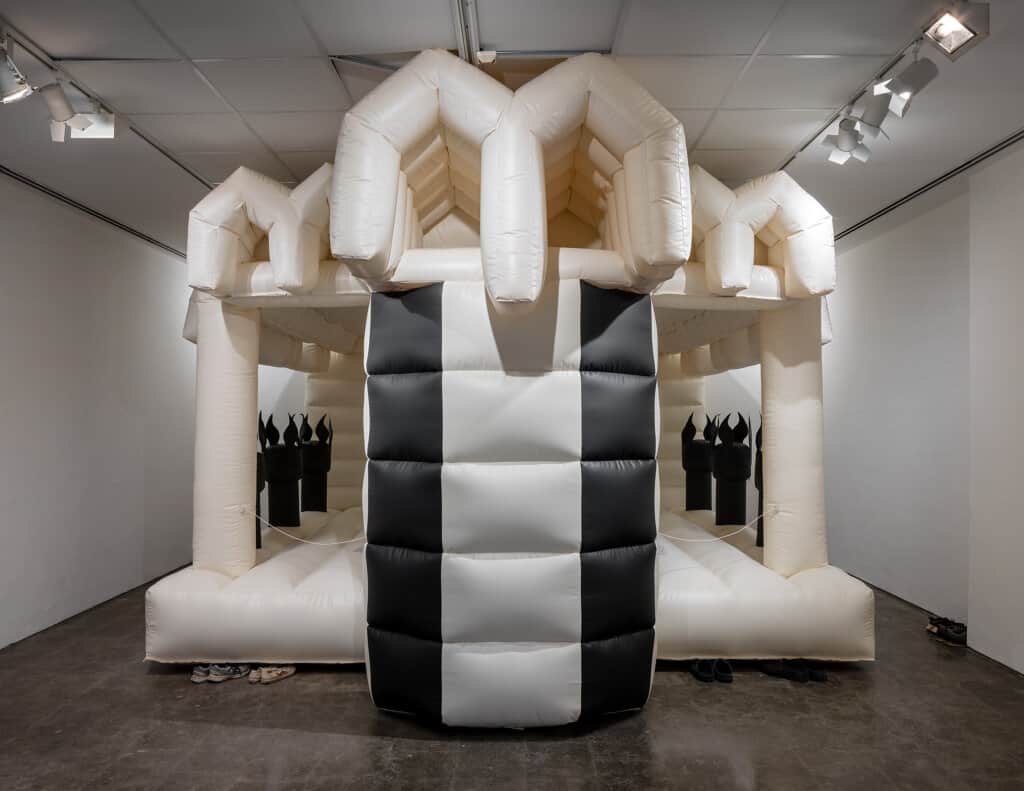
Inbal Hoffman creates living environments blending artificial and organic elements. She uses readymades and common, inexpensive consumer goods, alongside vegetation and soil, cultivation and gardening systems. Her multidisciplinary work deconstructs and reconstructs private prosaic moments and collective processes in Dadaistic ways that combine playfulness and humor, raising questions about social-cultural conventions and existing orders.
Hoffman’s current exhibition was created especially for the Museum’s Collection Gallery, located opposite the memorial hall at the Yad Labanim house, which is now part of the Petach Tikva Museum of Art. The first Yad Labanim house, founded in Israel in 1953, it served as a model for memorial spaces built thereafter throughout the country as it was a-priori designated to be used not only for commemoration, but also as a lively and active social-community center of culture. Architects and artists were involved in its establishment, as well as the families of the fallen soldiers, who purchased and donated artworks. The community, for its part, frequented the house for Memorial Day ceremonies and various social events, to visit exhibitions and take art classes.
Hoffman delves into the meaning of commemoration in today’s world from the point of view of someone for whom daily life in her childhood home was imbued with the memory of loss and bereavement (her uncle, her mother’s brother, was killed during his military service). She converts the typological commemorative institution, Yad Labanim house, the heart of the community, into a seemingly entertaining image shaped as an inflatable castle—a hybrid entity, a cross between the Yad Labanim houses in Beer Sheva, Netanya, and Petach Tikva. This inflatable structure-sculpture is installed at the heart of the gallery, its floor bearing a print of a mosaic by Mordechai Gumpel, permanently embedded into one of the adjacent walls, addressing the ideals of defense and nation building. Featured next to the structure-sculpture is a watercolor from the Museum’s collection—Nahum Gutman’s Shoes—probably created in 1956 following the Sinai war. Pairs of shoes, ostensibly taken off by children and adults before climbing the attraction, are placed along the gallery walls.
Unusable and bound to be deflated, the structure-sculpture is barren and doomed for destruction from the very outset. The location of the mosaic print prevents viewing it in its entirety, and the simple empty shoes also carry the potential of an unrealized game, as they allude to countless manifestations of shoes and their interpretations in art in general, and in Israeli art in particular: a symbol of humanism, of being-in-the-world, of labor and fulfillment ideals versus an expression of capitalism, overconsumption, and spectacle; a representation of belonging and a bond with a place versus an image of wandering; carriers of human warmth versus an embodiment of human cruelty and mass murder in modern history.
By disrupting the image, Hoffmann looks into the nature and communal role of the memorial house, exploring the changing ethos and the alternatives proposed in its stead; challenging private and collective memory in its encounters with the various manifestations of memory; and the role of art in the construction, preservation, and reconsideration of memory.
Inbal Hoffman
b. 1973, Haifa; lives and works in Tel Aviv
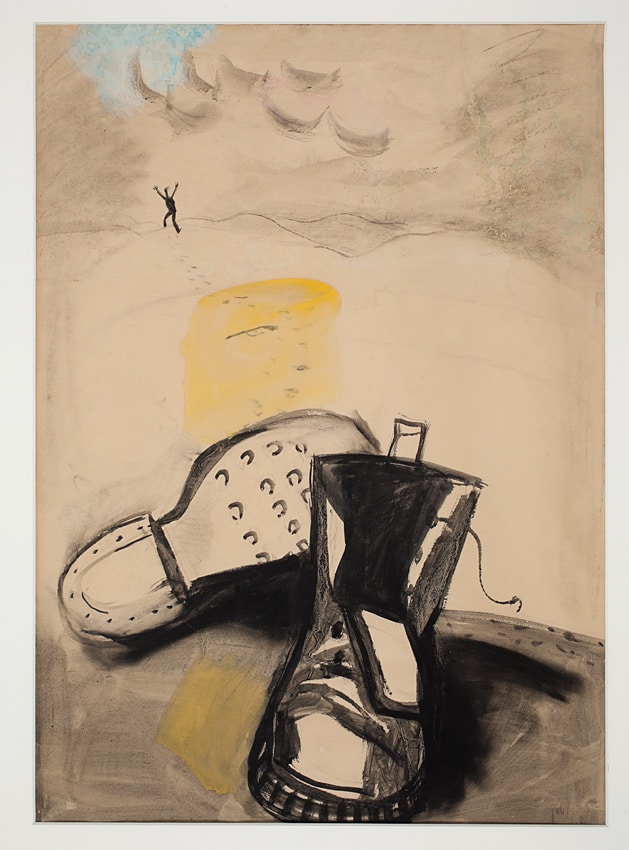
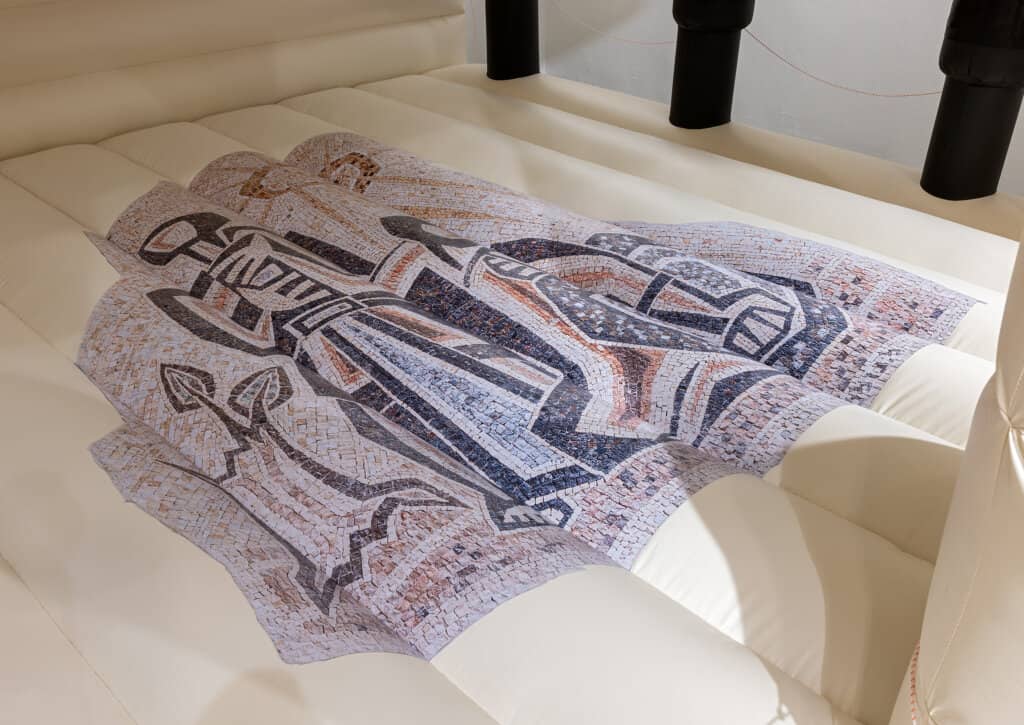
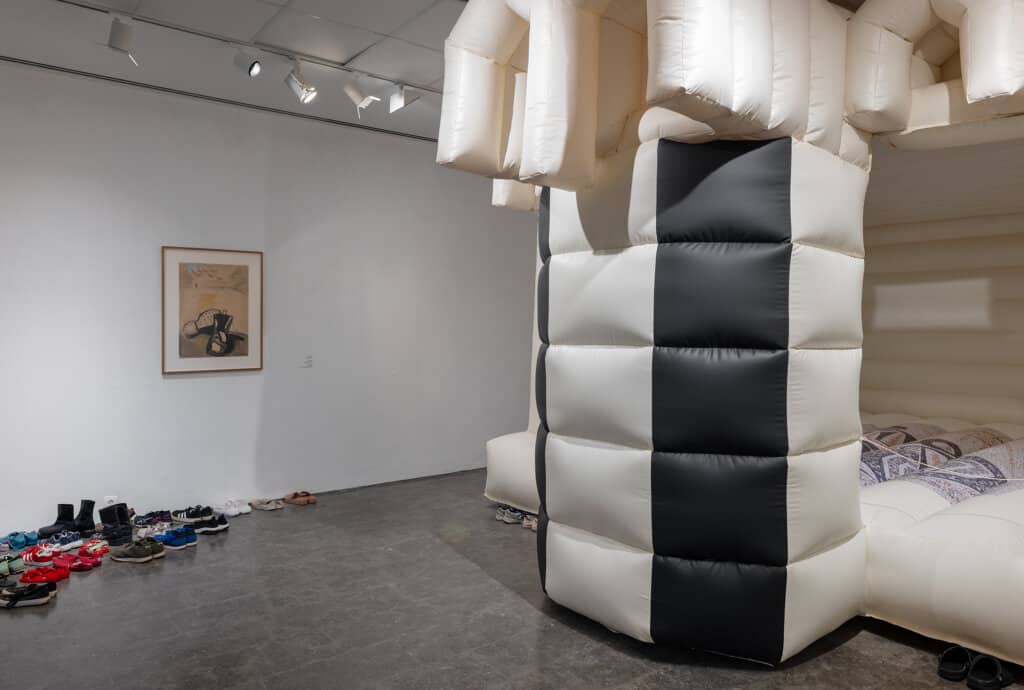
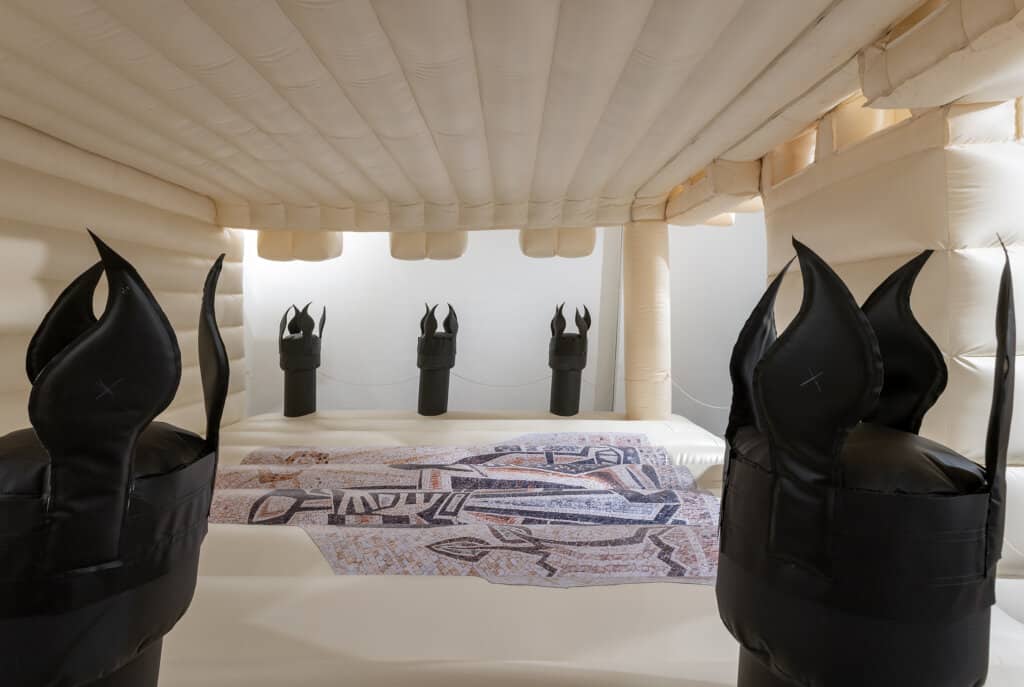
Installation photographs: Elad Sarig

